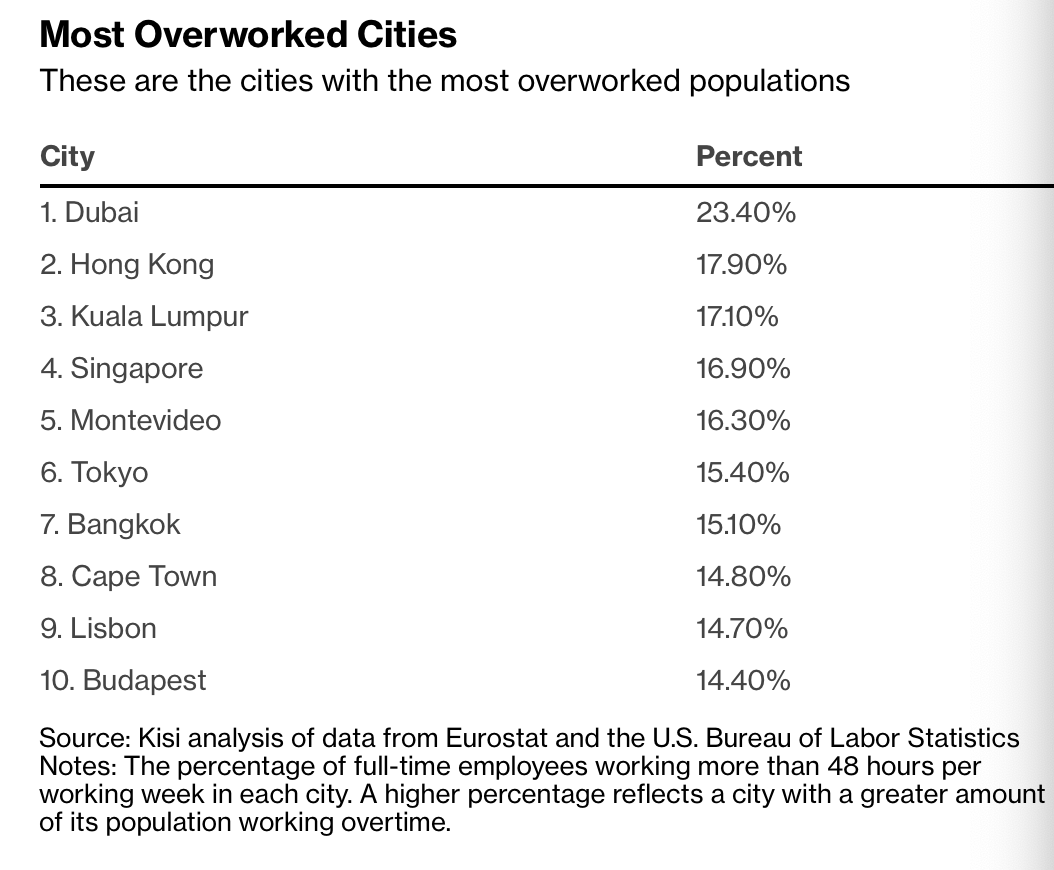Although I’m a student and prefer in-person engagement, WFH is favorable for almost everyone in some capacity. Without it, I wouldn’t be here writing for the past 2 years!
My urge for working in the comfort of my home on the couch may not be as great as for a working professional who is on the verge of retiring but all in all, WFH will continue to be a company’s true competitive advantage.
You can either work to live or live to work. I hope committed readers of my blog and financial stealth wealth minimalist masters can hopefully say they follow the latter since working to live can be a slippery slope if you continue to proportionately inflate your lifestyle with your earnings.
Thanks to required pay transparency in NYC, WFH flexibility, food and traveling perks, general lifestyle, and of course, paychecks are easier to compare and contrast in this day in age hopefully leading to more satisfaction in the job search.
While workers are still in hot demand in this tight labor market, so are the suburbs and WFH. Luxury vacation homes are up more than 5% this year alone from more domestic buyers and vacation bookings to airlines are having a hard time keeping up with pent-up demand. The American consumer is more resilient than ever. Let’s see how long it will last until borrowing costs ramp up.
We went down south to Hilton Head, SC last week and everything everywhere was busier, crowded, and waitlisted longer than during pre-pandemic!
Although the Fortune 500s were abrupt in scrapping their WFH plans and instead redesigned and invested in their offices across metropolitans, many are once again hesitant and pulling back.
With the spiking B.A.2 omicron variant cases, inflation at 40-year highs, and supply chain constraints wreaking havoc on workers’ wallets, $20 Sweetgreen and 3-hour commutes aren’t so hot anymore, especially since it eats more into one’s budget than last year, wastes precious time, and doesn’t usually strengthen producivity.
Work-life balance isn’t black or white — home or fully in the office. It entails personalized flexibility that suits everyone differently. Whether that means going into the office 3x a week or none, if it works for you, that is the real balance.

70/30 Bill
One of the reasons I adore personal finance is because it is personalized and different from the classroom.
I’ve never been a strong test taker. The fact of memorizing facts that go in one ear out the other isn’t appealing to me and I’m convinced hurts and deteriorates my brain. Instead, projects, presentations, and group work are an option in college and have sharpened my skills for the better. Thankfully experimentation and group work are much more favorable and applicable in this day in age.
Unlike school and test scores, there’s no one size fits all to personal finance and it is different for all, coming in various shapes and sizes just like our portfolios.
Personal finance is arguably the most vital skill in life and directly applies to almost everything we do. Since the number one stressor for Americans is their finances, it makes sense we think about money more than anything since most either didn’t have the proper training and education or aren’t savvy enough to take control of their finances earlier than later.
The 70/30 split is a conventional allocation in a portfolio for those with a moderate risk tolerance and is preferred for those who are able to stomach more risk since they are younger. The recommended age range to stick with this allocation is from18 to almost 50 then the exposure to equities shrinks as retirement is nearing and more stable fixed returns through dividends and safe havens such as Treasuries and I Bonds are preferred.

In life, I prefer to follow this same balance, 70/30 with my decision-making. We all make suboptimal decisions most of the time but to increase your happiness score and chances, try applying this rule in your life, especially with WFH.
You can take the 70/30 approach from different angles or lessen or increase your exposure if you prefer but I believe 70/30 is a straightforward and realistic ratio to base my decisions on.
Let’s say I’m deciding between driving to work or taking public transportation. I had to go through these mental gymnastics up to 3x a week this past semester commuting to the city from upstate.
Since making decisions has become harder for me over the years due to analysis paralysis, I needed a decision-making guide that would be quick and advantageous.
After trying out both commuting options for weeks, I asked myself, am I happier 70% of the time driving or using public transport?
Both require sacrifices so it was even, but for driving, I needed to beat the rush hour by 2 extra hours in the morning to make it to class by 8 am and for public transport, there would be more train and subway switching with a mix of walking but overall less expensive.
I noticed more than 2x, 70% of the time, I was happier driving despite waking up earlier. Not surprised in this infrastructure-crumbling country.
With WFH, whether you are struggling to find balance with the kids or figure out how many days to go into the office, if you have the luxury to choose what to do in these situations, ask yourself, when are you more than 2x happier and what brings 70% of that happiness?
You can follow this simple strategy or not. Just remember, simple doesn’t mean it doesn’t work. If you want proof, look at the city with the best work-life balance in 2022: Oslo.

Why Oslo, Norway Has the Best Work-Life Balance
Clearly, WFH is personalized to each worker yet overall, there’s no doubt the Nordic countries always rank the highest on the happiest charts and WFH has fueled that ranking thanks to the power of balance.
If some of the most prized benefits of working for a corporation such as healthcare, PTO, 401(k) matches, disability, and free education were free in this country, boy, I cannot even imagine how many serial entrepreneurs there would be and happiness rankings the U.S. would climb.
City livability, not to mention skyrocketing home prices with the average home price nearing ~400k, and work intensity and competitiveness in this country are contagious and becoming lethal.
We can debate if working harder not smarter has really paid off but clearly performance plateaus after a certain number of hours. If there’s anything we can learn from the happiest people on earth, it is that they have a basic mindset to life, work, and keep their decision-making practice in focus. They believe in moderation in order to achieve the highest work-life balance scores.
If you’re wondering, cities such as Helsinki and Oslo don’t offer unlimited PTO and vacation time since studies have proven workers take less time off this way. Instead, a full month of paid vacation every year at the same time coordinated with the school system is more beneficial.
For the shortened commute, workers may want to consider Singapore, Washington D.C., or Austin where over 50% of jobs located there can be performed remotely full-time.

Burnout Bust
If you’re looking to tame your addiction to overworking that started when you graduated, work-life balance may not always be the trick. Just like an old dog can’t learn new tricks, it is very hard for high earners and go-getters to lower their work commitment.
I know dozens of people, including my family members who’ve worked 70–80hr weeks for 25+ years and to take a break, they reduce their hours by 5–10 and call it a vacation.
It’s all relative and as a lifelong New Yorker, although I thrive off of the city energy and know I do need an occasional break, when I do, it is difficult to sit still! I go paranoid and become a bit depressed.

Since burnout and mental illness have become crises in America and abroad if you’re looking for a permanent escape, not an overnight shot, you may want to try Amsterdam, Buenos Aires, or Sydney.
Work intensity and feeling overwhelmed don’t only have to do with long hours and physically clocking in and out at work. It also can be a result of being at home, not feeling appreciated, the weather, your genes, or having no purpose beyond yourself. Rates of overwork, access to health care, and overall reported feeling of well-being are major factors alongside the cost of living as the top factor.
When you observe the most overworked cities, many of which are outside of the U.S., you must wonder what type of work they are doing that is truly demanding and exhaustive. Most of the time, it isn’t the work, it is the decisions, priorities, people you are with, and the way you do something that messes things up.
A colleague once told me, it’s not what you do but how you do it. Moderation is key in everything in life and surprisingly, there’s not a single city in the U.S. on this list that is considered the most overworked.
This can be partly due to the economic security and prosperity of climbing the corporate ladder and becoming an entrepreneur in the U.S. where anxiety is seen as a ‘privilege’ and not a real threat compared to countries that may offer free healthcare and subsidies but are really in danger.
If you claim to be overworked, look to investing principles to keep you sound. The best time to tackle what you are feeling is today and the worst time to do so is tomorrow. Time is on your side and whether you like it or not, doing something repeatedly will naturally compound.
The pandemic has made us all more vigilant about our mental, physical, emotional, and spiritual well-being. Never take for granted your health since at the end of the day, health = wealth and cannot be purchased or replaced.

